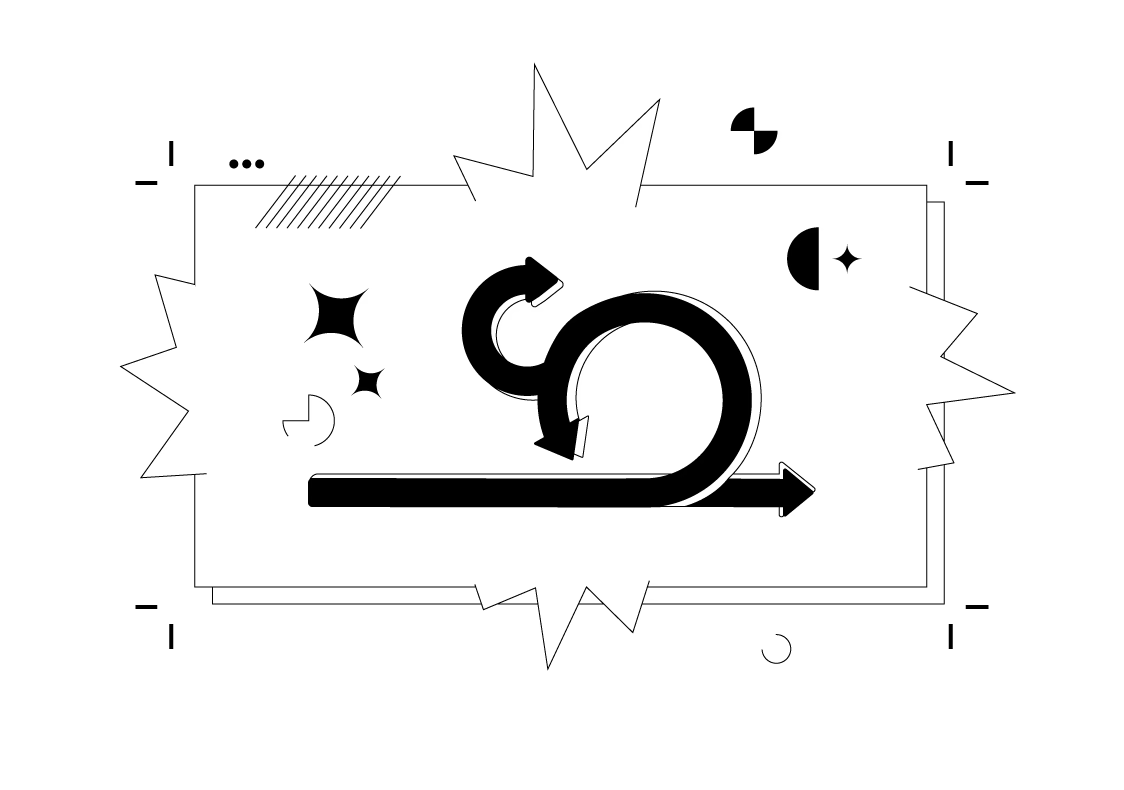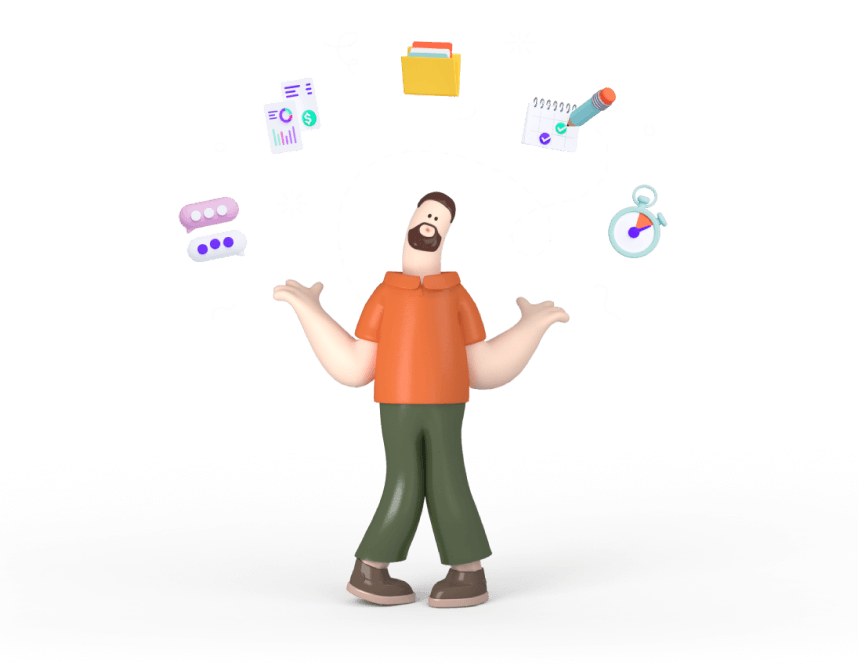Scaled Agile Framework: SAFe Project Methodology

In project management today, the Scaled Agile Framework (SAFe) stands out for scaling agile practices across teams. It helps businesses become more agile and efficient by providing a structured approach to managing complex projects while promoting alignment, collaboration, and large-scale delivery. This guide covers SAFe's basics—its history, core values, roles, and processes—enabling organizations to navigate large-scale agile transformations effectively and benefit from this powerful framework.

What is Scaled Agile Framework?
The Scaled Agile Framework (SAFe) is a comprehensive set of organizational and workflow patterns meticulously crafted by Dean Leffingwell. It serves as a guiding framework for enterprises looking to scale lean and agile practices effectively. By integrating principles from Lean, Agile, and DevOps, SAFe empowers businesses to enhance their ability to deliver high-quality products and services efficiently and predictably. This structured approach helps organizations streamline their processes, foster collaboration across cross-functional teams, and achieve greater business agility in responding to market demands.
History of Scaled Agile Framework
SAFe was introduced to address the challenges of implementing agile practices in large, complex enterprises. The framework has evolved over the years, incorporating feedback from real-world implementations and advancements in agile methodologies. Since its inception, SAFe has undergone multiple iterations, with the latest version, SAFe 6.0, reflecting the latest best practices and innovations in agile project management.

Scaled Agile Framework Core Values
What are the three levels of the scaled agile framework?
The Scaled Agile Framework is structured into three main levels to facilitate scaling across large organizations:
- Team Level: Focuses on the execution of agile practices within individual teams, similar to Scrum or Kanban.
- Program Level: Coordinates efforts across multiple teams working on the same product or project, using constructs like the Agile Release Train (ART).
- Portfolio Level: Aligns the organization’s strategy with execution, ensuring that the right investments are made to deliver valuable products and services.
Scaled Agile Framework Roles
The Scaled Agile Framework (SAFe) encompasses various critical roles that contribute to its structured approach in scaling lean and agile practices effectively. These roles, each essential in their own right, ensure alignment, collaboration, and successful delivery within the organization.
Product Owner - At the heart of SAFe is the Product Owner, tasked with defining and prioritizing the product backlog. Their role ensures that the team focuses on developing the most valuable features and delivering iterative customer value.
Scrum Master - The Scrum Master plays a pivotal role in SAFe by facilitating agile ceremonies, removing impediments, and fostering a culture of continuous improvement within the team. Their dedication ensures that agile practices are effectively implemented and sustained.
Agile Team - Central to SAFe are Agile Teams comprising cross-functional members who work collaboratively to deliver increments of value. These self-organizing teams are empowered to make decisions autonomously, driving towards shared goals and objectives.
Release Train Engineer (RTE) - The Release Train Engineer (RTE) serves as a servant leader and coach for the Agile Release Train (ART). They facilitate ART events and processes, supporting teams in consistently delivering value and ensuring alignment across initiatives.
Product Manager - Operating at the program level, the Product Manager defines the product vision, roadmap, and features. Their role is pivotal in aligning product development with business goals and customer needs, ensuring that every iteration contributes to strategic objectives.
System Architect - The System Architect takes charge of defining the overall architecture and technical direction for the solution within SAFe. Their responsibilities include ensuring that technical decisions align with strategic vision, supporting scalability, and optimizing performance.
Business Owner - As key stakeholders in SAFe, Business Owners bear ultimate responsibility for the business outcomes of the Agile Release Train (ART). They provide strategic guidance, approve Program Increment (PI) objectives, and ensure that every initiative aligns with overarching business strategies.
Stakeholders - Stakeholders within SAFe encompass a diverse group, including customers, business leaders, and other vested parties. Their insights and feedback are invaluable, ensuring that the solutions delivered meet both business requirements and customer expectations, thereby driving success across the organization.
Scaled Agile Framework PI Planning
PI Planning Process
Scaled Agile Framework's Program Increment (PI) Planning is a vital process that unites all teams within the Agile Release Train (ART). This event brings stakeholders, product owners, scrum masters, and team members together to collaboratively set objectives for the upcoming increment. It fosters transparency, alignment, and commitment across the entire program, ensuring teams are synchronized and focused on delivering value effectively.
Agile Release Train (ART)
The Agile Release Train (ART) serves as a durable framework where multiple agile teams and stakeholders collaborate to iteratively develop, deliver, and maintain one or more solutions within a specific value stream. This unified approach aligns diverse teams towards a common mission and vision, fostering seamless coordination and enabling consistent delivery of incremental value throughout the development lifecycle.
CI/CD in SAFe
Continuous Integration and Continuous Deployment (CI/CD) are critical practices in SAFe, enabling teams to deliver high-quality software rapidly and reliably. CI/CD practices ensure that code changes are automatically tested, integrated, and deployed, reducing risks and accelerating time-to-market.
Implementation of CI/CD Practices
Implementing CI/CD in SAFe involves establishing automated testing and deployment pipelines, fostering a culture of continuous improvement, and leveraging tools that support seamless integration and delivery. This ensures that teams can quickly respond to changes and deliver value continuously.
Iterative Development and Sprint Execution
Iterative Development and Sprint Execution are pivotal components of SAFe, offering structured frameworks for teams to consistently deliver incremental value.
Understanding Iterations and Sprints in SAFe
Iterations and sprints are foundational in SAFe's agile approach, establishing regular cycles for teams to plan, execute, and evaluate their work. Typically lasting two weeks, each iteration allows teams to focus on delivering tangible results while fostering continuous improvement throughout the development process.
Agile Ceremonies and Their Role in SAFe
Agile ceremonies are essential in SAFe, facilitating collaboration, alignment, and ongoing improvement within and across teams. Events such as sprint planning sessions, daily stand-ups, sprint reviews, and retrospectives provide structured opportunities for teams to synchronize efforts, address challenges, and refine processes. These ceremonies ensure teams using tools like ActiveCollab remain responsive to changes, maintain transparency, and optimize workflows for efficient value delivery.
Release Management and Release on Demand
In SAFe methodology, Release Management and Release on Demand are crucial in delivering value efficiently. These practices ensure that development cycles are closely aligned with business needs, enabling organizations to release high-quality products and updates continuously and as needed, fostering agility and responsiveness in the market.
Release Planning and Management
Release planning within SAFe is a collaborative effort aimed at aligning and coordinating the activities of multiple teams to optimize the delivery of maximum value to customers. This structured approach to release management ensures that features are delivered reliably and predictably, enhancing overall efficiency and customer satisfaction. By synchronizing team efforts and priorities, SAFe's release planning process enables organizations to streamline workflows and achieve consistent, high-quality deliveries that meet evolving market demands effectively.
Benefits of Release on Demand in SAFe
Release on Demand empowers organizations to deploy new features and updates promptly as they become available, bypassing rigid release schedules. This agile approach significantly enhances responsiveness, agility, and ultimately, customer satisfaction. By enabling continuous delivery, Release on Demand ensures that organizations can swiftly respond to market demands, incorporate feedback efficiently, and deliver value-driven solutions in a timely manner.
SAFe Principles
The SAFe (Scaled Agile Framework) approach is anchored by several core principles that guide organizations in scaling Agile practices effectively:
- Alignment: Ensures that all teams and programs work towards unified goals, providing a coherent direction.
- Systems Thinking: Advocates for a comprehensive view of the development process, focusing on optimizing the entire system instead of isolated parts.
- Economic Thinking: Informs decision-making by considering business outcomes, ensuring that value is delivered efficiently.
- Cadence and Synchronization: Emphasizes regular, iterative cycles and coordinated efforts across the organization to foster continuous improvement and adaptability.
- Decentralized Decision-Making: Enables teams to make quicker, well-informed decisions, boosting responsiveness and innovation.
- Transparency: Highlights the importance of open communication and visibility into processes and progress.
- Objective Evaluation: Relies on empirical data to drive decisions and refine processes.
By following these principles, organizations can enhance their agility, productivity, and quality in software development. This overview provides a foundation for a deeper exploration of each principle in future discussions.
Benefits and Challenges of SAFe
- Enhanced Collaboration and Alignment
SAFe fosters enhanced collaboration and alignment across teams and departments, ensuring that everyone is working towards common goals and objectives.
- Scalability and Flexibility
SAFe provides a scalable and flexible framework that can be adapted to the needs of any organization, regardless of size or complexity.
- Improved Time-to-Market and Productivity
By streamlining processes and facilitating continuous delivery, SAFe helps organizations bring products to market faster and more efficiently.
- Transparency and Visibility
SAFe enhances transparency and visibility into the work being done, allowing stakeholders to make informed decisions and quickly address any issues.
- Organizational Resistance and Cultural Shifts
Implementing SAFe can be challenging due to organizational resistance and the need for cultural shifts. Overcoming these challenges requires strong leadership, effective communication, and a commitment to change.
- Complexity and Scale of Implementation
The complexity and scale of SAFe can be daunting, requiring careful planning and execution to ensure successful implementation.
- Training and Skill Development Requirements
SAFe requires significant investment in training and skill development to ensure that teams and leaders have the knowledge and expertise needed to succeed.
SAFe vs Agile
What is the Difference Between Agile and Scaled Agile Framework?
Agile methodologies like Scrum and Kanban focus on empowering small teams to adapt quickly to changes and deliver incremental value. In contrast, SAFe integrates additional roles, processes, and structures to facilitate large-scale Agile transformations across entire organizations. It aligns multiple teams and stakeholders towards common goals, ensuring that Agile practices can be effectively scaled while maintaining coordination and efficiency across complex projects.
Disciplined Agile (DA) and Agile at Scale are other frameworks that address similar challenges but adopt different approaches tailored to specific organizational needs and contexts.
SAFe Agile Development
SAFe Agile Development is an integrated approach that applies agile principles to scale and manage software projects across large organizations. It focuses on synchronizing multiple teams and stakeholders to deliver software iteratively and incrementally, ensuring alignment with business goals and adapting to changing requirements effectively.
SAFe Software Development
SAFe Agile Development is a robust methodology that blends agile practices to deliver software in iterative and incremental stages, emphasizing both quality and meeting customer expectations. By dividing projects into manageable increments, SAFe promotes continuous feedback and adaptation, enabling teams to refine and enhance products as requirements evolve. This iterative approach accelerates delivery while enhancing flexibility, empowering organizations to swiftly respond to changing market demands and customer needs. Ultimately, SAFe Agile Development aims to optimize software delivery by aligning development efforts with strategic business objectives and consistently delivering value throughout the development lifecycle.
SAFe Project Management
In organizations using SAFe methodology, project management is structured across three levels to enhance collaboration and efficiency:
- Team Level: Scrum teams operate similarly to traditional Scrum, focusing on specific goals and releasing iterations after each Sprint. Typically led by a Scrum Master, these teams adopt best practices to align their efforts with larger programs, ensuring a seamless transition within the Agile SAFe workflow.
- Program Level: At this level, the integration of team outputs creates a cohesive product. Guided by a Release Train Engineer (RTE), teams collaborate within an Agile Release Train (ART) to deliver a Potentially Shippable Increment (PSI) after several Sprints. This approach enables more frequent code releases compared to traditional methods, fostering quicker decision-making and continuous delivery aligned with the core values of the SAFe framework.
- Portfolio Level: This level manages multiple programs with a long-term vision, incorporating strategic planning into SAFe project management. It involves budgeting, setting epic milestones, and planning across multiple quarters, merging strategic and project planning to align with organizational goals and ensure the delivery of maximum value.
By organizing project management in this way, SAFe ensures that all levels are aligned with strategic objectives, promoting efficiency, consistent value delivery, and adherence to the agile SAFe methodology.
Implement SAFe With ActiveCollab
Integrating SAFe with ActiveCollab transforms Agile project management by enhancing collaboration and visibility across teams and programs. ActiveCollab’s intuitive features enable teams to organize work into iterations and Sprints seamlessly, facilitating efficient task management and real-time progress tracking. With customizable workflows and templates tailored to SAFe principles, teams can ensure their outputs align perfectly within Agile Release Trains. Additionally, ActiveCollab’s powerful reporting and analytics tools provide deep insights into project performance, empowering data-driven decision-making and fostering continuous improvement throughout the SAFe implementation journey. By leveraging ActiveCollab, organizations can scale Agile practices effectively and consistently deliver high-quality value to their customers.
Flow of Work in Scaled Agile Framework
Pair Work in the Scaled Agile Framework
Pair work is a collaborative practice in SAFe that enhances code quality, fosters knowledge sharing, and improves team dynamics. By working in pairs, team members can identify and address issues more quickly, resulting in higher-quality deliverables.
Which Activity is Key to Successfully Implementing the Scaled Agile Framework?
Effective implementation of SAFe requires a commitment to continuous improvement, strong leadership, and a culture of collaboration and transparency. Key activities include robust training, clear communication, and alignment with business goals.
Scaled Agile Framework vs Scrum
Large-Scale Scrum (LeSS) and Scrum@Scale represent two distinct frameworks tailored for scaling agile practices within large organizations, each offering its unique approach and guiding principles. LeSS prioritizes simplicity, streamlining the scaling process by focusing on minimalistic practices that enhance coordination across multiple teams. On the other hand, Scrum@Scale emphasizes modular scalability, providing organizations with a flexible framework to incrementally expand agile practices while maintaining adaptability to evolving project demands. These frameworks enable organizations to effectively navigate the complexities of large-scale projects, fostering agility and optimizing productivity through tailored methodologies suited to diverse organizational contexts.
Scaled Agile Framework Certification
Scaled Agile Framework Certification Cost and Training
SAFe certification programs provide valuable training and credentials for individuals and organizations looking to implement SAFe. These certifications, such as SAFe Agilist and SAFe Practitioner, validate the knowledge and skills needed to lead successful agile transformations. The cost of certification varies depending on the level and type of training.
SAFe 6.0
SAFe 6.0 represents the latest evolution of the framework, integrating advanced best practices and innovations tailored to support large-scale agile transformations. This updated version emphasizes continuous learning, innovation, and seamless delivery, empowering organizations to thrive in an increasingly competitive market landscape. By promoting a culture of adaptability and responsiveness, SAFe 6.0 enables teams to consistently deliver value while embracing ongoing improvement and evolution. It aims to streamline processes, foster deeper collaboration across teams, and enhance organizational agility, positioning enterprises to effectively navigate challenges and achieve sustained success in dynamic business environments.
Incorporating SAFe into project management practices can significantly enhance an organization's ability to deliver value efficiently and effectively. Tools like ActiveCollab can complement SAFe by providing robust project management capabilities, facilitating collaboration, and ensuring seamless integration across teams and processes.
In conclusion, the Scaled Agile Framework offers a comprehensive approach to scaling agile practices across large organizations. By understanding its core values, roles, processes, and benefits, businesses can effectively navigate the complexities of large-scale agile transformations and achieve greater agility, collaboration, and productivity.
Continue reading
Project Management Methodologies Introduction
Get familiar with the most popular methodologies modern project managers use! Learn the basics and choose the best method to manage your teams and projects.
